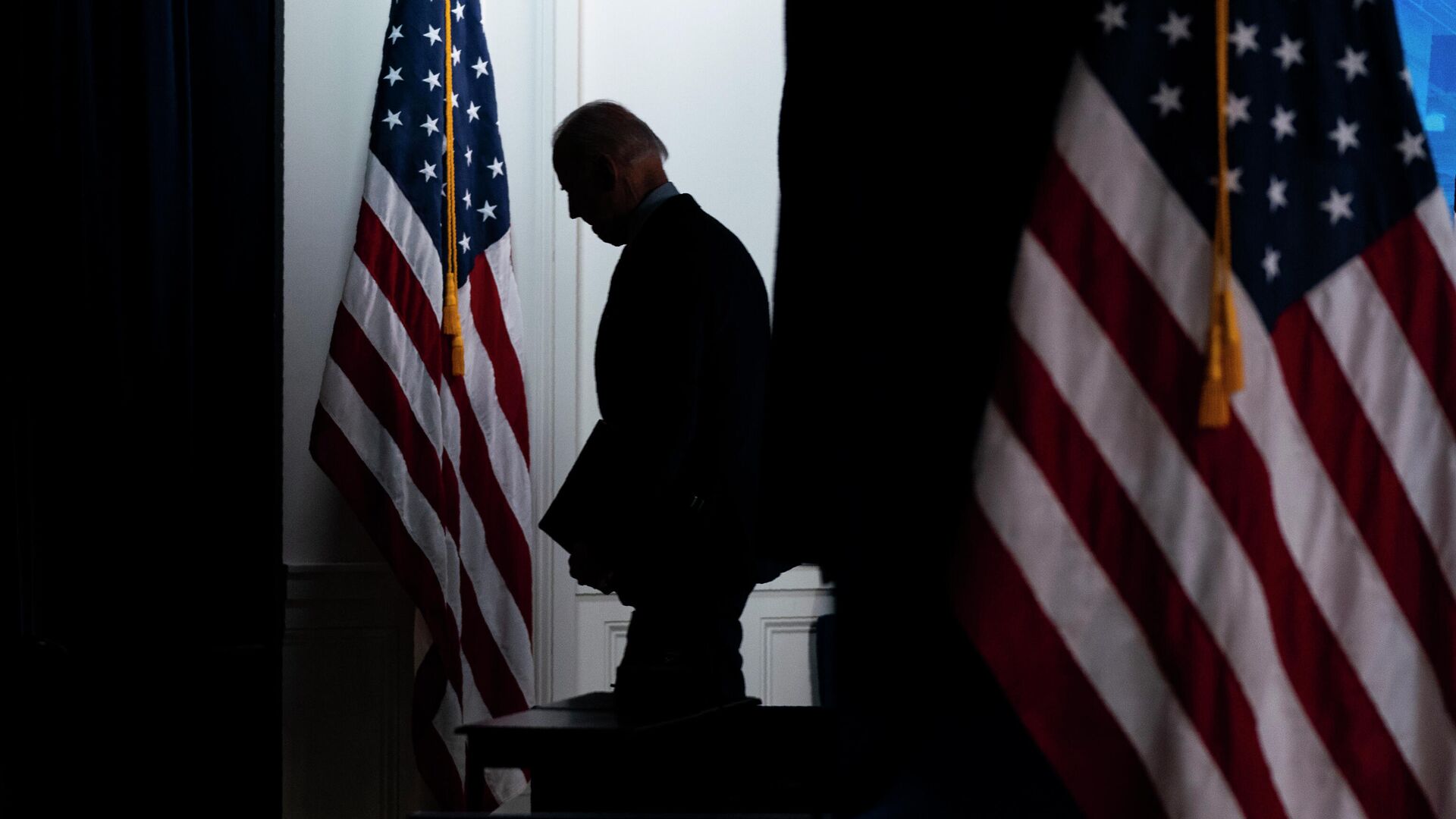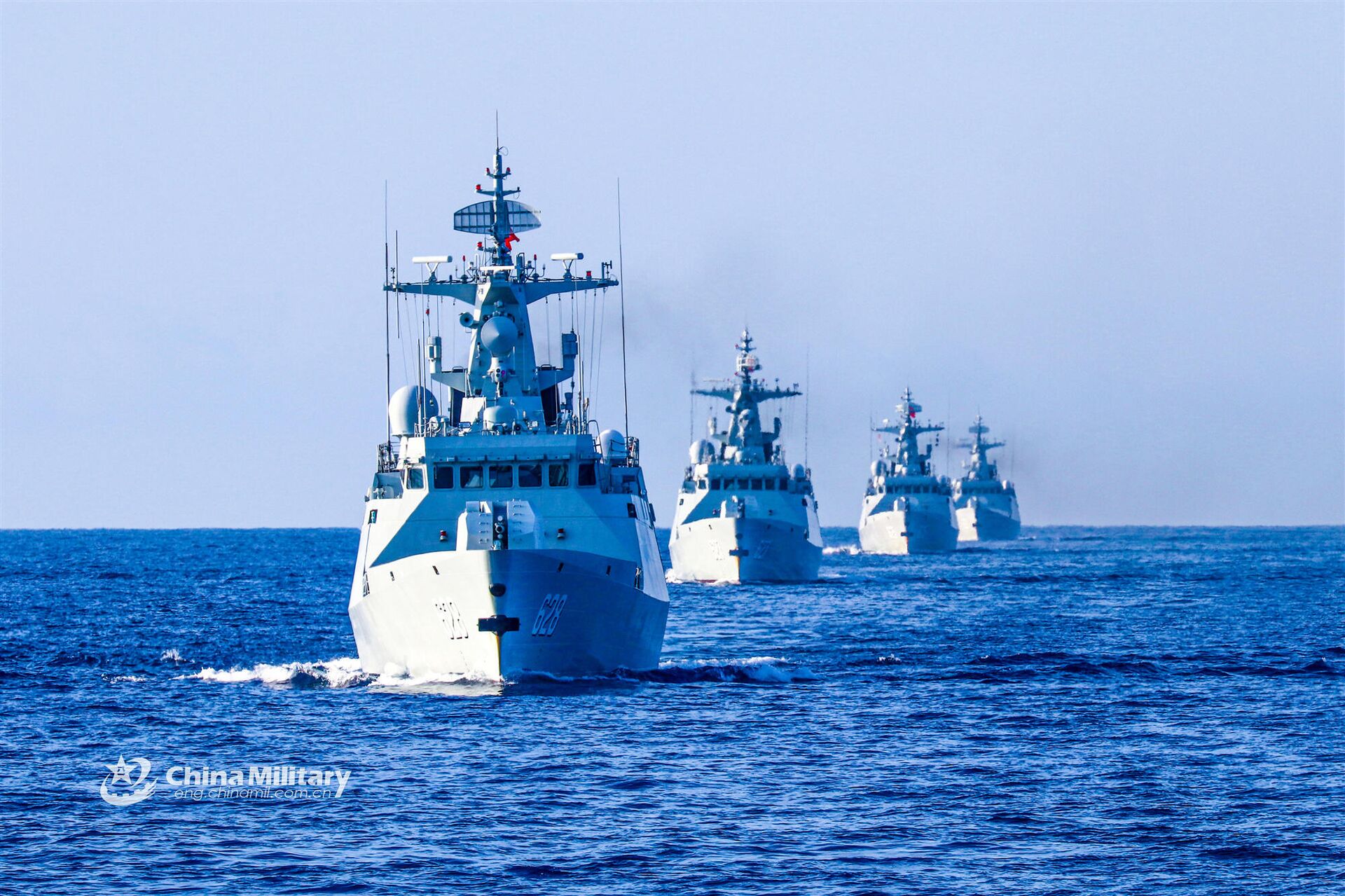What's Behind Biden's Resolve to Defend Taiwan Against Beijing?
19:32 GMT 23.05.2022 (Updated: 12:43 GMT 19.06.2023)

© AP Photo / Evan Vucci
Subscribe
During a press conference in Tokyo alongside Japanese Prime Minister Fumio Kishida on Monday, US President Joe Biden promised a military response should China attempt to retake Taiwan by force.
"This is just PR optics to look tough and resolute back home," says Jeff J. Brown, author of The China Trilogy, editor of China Rising Radio Sinoland, and co-founder and curator of the Bioweapon Truth Commission Global Online Library. "With a supply chain spanning the Pacific, the US would struggle to defend Taiwan against the People’s Republic of China (PRC), which could overwhelm it militarily, being only 2,000 kilometres offshore and with installations close by in the South China Sea."
The roots of the conflict are, however, complex. Beijing’s One China Policy stipulates that Taiwan is part of the PRC, but Washington has long maintained relations with the island.
In 1949, the Western-backed Nationalist Party of China, called the Kuomintang (KMT), lost control of mainland China after its defeat to the Communist Party of China (CPC) in the civil war. The KMT then fled to Taiwan, declaring itself the Republic of China (ROC) and gaining the instantaneous backing of the US and allies.
Taiwan and the US were joint participants of the Sino-American Mutual Defence Treaty between 1955 and 1979, with Washington continuing to back the Kuomintang-led leadership despite establishing diplomatic relations with Beijing and recognising it as the sole legitimate government of China on 1 January 1979.
"The US-China understanding on Taiwan includes the provisions in the three communiqués issued in 1972, 1979 and 1982," says Srikanth Kondapalli, a professor in Chinese studies at Jawaharlal Nehru University, New Delhi, India.
In the first communiqué, Washington admitted that "all Chinese on either side of the Taiwan Strait maintain there is but one China". In the second, the US declared that it would end formal political relations with Taiwan while continuing to maintain economic and cultural ties. In the third, the White House pledged to reduce arms sales to Taiwan if peace was observed across the Taiwan Strait.
Likewise, Kondapalli agrees with Brown that Biden's remarks were nothing but PR.
"Even though President Biden said that the US would defend Taiwan, the State Department had clarified later that the US-China understanding on the Taiwan issue remains intact," notes Kondapalli. "There is no change in the US position on this issue."
According to CNN, it's the third time in recent months that the US president has said that he would protect Taiwan, only to have the White House walk back the remarks.
Each time, Beijing has strongly criticised Biden's stance, with Chinese Foreign Ministry spokesman Wang Wenbin telling journalists that no country should underestimate China’s "firm resolve, staunch will and strong ability” to protect its sovereign interests on Monday.
Poking the Dragon and the Bear
The US president's remarks came on the heels of the authorisation of $40 billion in military aid for Kiev amid the Russian special operation in Ukraine and a lend-lease bill aimed at streamlining US military aid to the Kiev government.
According to Brown, Washington officials are simultaneously poking Russia and China even though they know that the US cannot take on the two Eurasian countries at once.
"The US cannot and knows it, which is why it is trying to destroy Russia first via Ukraine, so as to take on China without Russian solidarity," he says. "China is the ultimate bête noire competing against the West’s neoliberal, neoconservative global capitalism."

The frigate Enshi (Hull 627), Yongzhou (Hull 628), Bazhong (Hull 625), and Wuzhou (Hull 626) steam in formation during a 9-day maritime training exercise in waters of the South China Sea in late November, 2020. They are attached to a frigate flotilla of the navy under the PLA Southern Theater Command.
Indo-Pacific Economic Framework
Apart from his bellicose remarks during his visit to Tokyo, Biden also unveiled a new economic plan aimed at containing China.
According to the US president, who unveiled the Indo-Pacific Economic Framework (IPEF), "the future of the 21st century economy is going to be largely written in the Indo-Pacific", which he went on emphasise was "our region".
In response, Kondapalli explained that "I don't think the IPEF immediately challenges the previous economic relations but provides a psychological alternative to the Chinese Belt and Road Initiative (…) The US may not directly invest in IPEF but is currently signalling against China."
The scholar likewise noted that IPEF is a new idea in the making, amidst many such plans that the US has promoted before “quietly fad[ing] away", citing the Asia-Pacific Economic Cooperation (APEC), the North American Free Trade Agreement (NAFTA), and the Trans-Pacific Partnership (TPP). "We have to see how IPEF evolves," he stresses.
Meanwhile, China’s response has been firm. Beijing has concluded over a dozen free trade agreements with regional players in recent months, as well as launched the Regional Comprehensive Economic Partnership (RCEP) and applied for membership to the Comprehensive and Progressive Agreement for Trans-Pacific Partnership (CPTPP), Kondapalli notes.
"At the moment there is no effort to completely divert trade away from China to other countries," says the professor. "The US has 70,000 companies in China with $700 billion in investments. I don't think the US is going to take them away."
For his part, Brown warns that the West's disregard of major economic principles, as well as the printing trillions of dollars and euros, will continue until "the house of cards comes crashing down."




